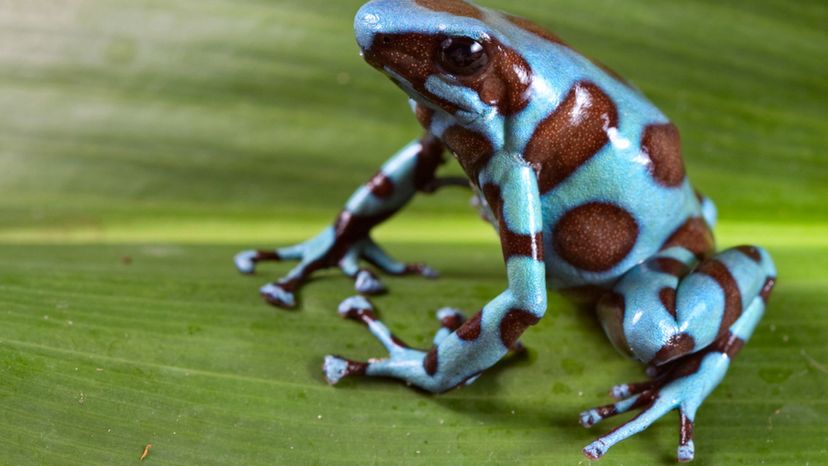
Image: n/a
About This Quiz
Amphibians comprise a large variety of creatures. Most people know about frogs or toads but did you know that salamanders and newts are amphibians too? But would you be able to tell the difference? Let's see and make sure you don't croak!
YouTube
What amphibian is in this image?
Gold Striped Salamander
Archey's Frog
Found only in New Zealand, unfortunately, this frog is on the critically endangered list. It lives on the North Island in the area around the Coromandel Peninsula and the Whareorino Forest and generally at altitudes of 400 m to 1000 m. This species is considered to be a ‘living fossil' and has changed little over the past 200 million years.
Smooth Newt
Mountain Chicken

YouTube
What amphibian is seen in this image?
Sagalla Caecilian
This worm-like amphibian is only found in one area - Sagala Hill in Kenya. It burrows into the ground to lay eggs which the female will protect until they hatch. Sagalla Caecilian feed on termites and earthworms.
American Bullfrog
Giant Toad
Chinese Giant Salamander

Shutterstock
What amphibian is seen in this image?
Lemur Leaf Frog
Tree Frog
Common Toad
Chinese Giant Salamander
The largest amphibian in the world, Chinese Giant Salamanders can reach up to six feet in length and weight 50kg! They create underwater dens, normally found in crevices in rocks or small caves where females can breed. When born, the salamander tadpoles are only 3 cm in length.
Advertisement
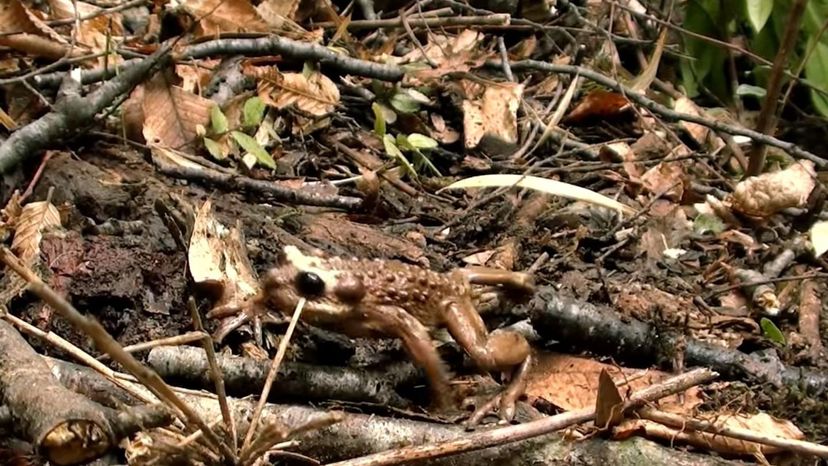
YouTube
What amphibian is seen in this image?
Alligator Newt
Fire Salamander
Bullock's False Toad
This elusive amphibian is found in the Nahuelbuta National Park in Chile. It has only been spotted twice in the last 20 years, suggesting that there are not many of this species left. A dead specimen revealed that these toads are omnivores and eat both plants and insects, including cockroaches.
Emporer Newt
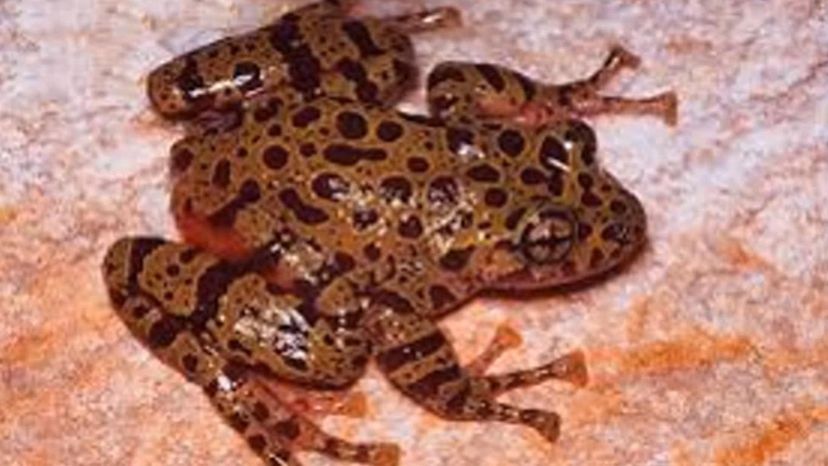
YouTube
What amphibian is seen in this image?
Blue-Tailed Fire-Bellied Newt
Table Mountain Ghost Frog
Found in Cape Town, South Africa, specifically around Table Mountain, this frog is critically endangered. It reaches about 60 mm in length and is noted for its reddish/brown coloring. It often has a slight pink underbelly. These frogs have suckers on their feet to help them climb steep, wet, rock surfaces.
Cave Salamander
Fire Salamander
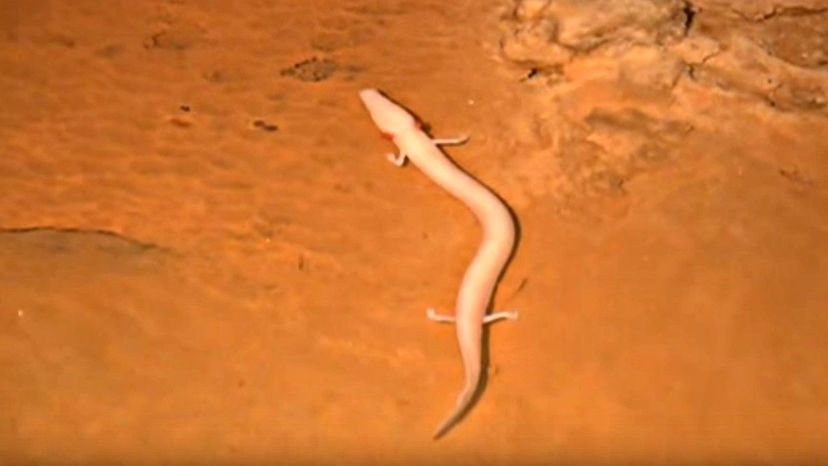
Youtube
What amphibian is seen in this image?
Olms
Sometimes called a cave salamander or a Proteus, the Olm is blind. It lives in Europe, mostly in underwater caves in rivers or lakes. It relies on both hearing and smell to make its way around in the dark so much so that its eyes are underdeveloped. Olms are carnivores and hunt small invertebrates, worms, larvae and underwater insects.
Bullfrog
American Toad
White's Tree Frog
Advertisement
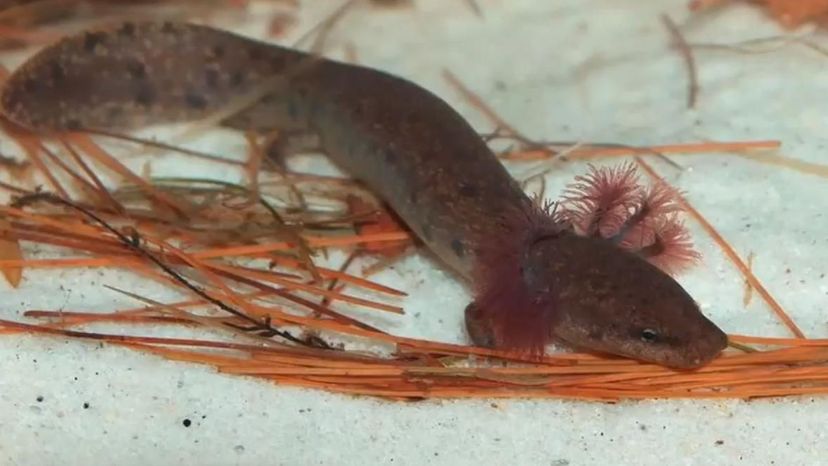
YouTube
What amphibian is seen in this image?
Green-and-black Poison Dart Frog
Wyoming Toad
Brown Snake
Alabama Waterdog
This salamander is only active at night. During the day, it will hide under rocks or organic material. This elusive creature, found in the Black Warrior River drainage area, is thought to be inactive during summer. It grows up to 22cm in length and feeds on invertebrates and small fish.

YouTube
What amphibian is seen in this image?
Townsend Dwarf Salamander
Found in Mexico, this salamander lives amongst bromeliad plants at a height of 800 m to 1500 m in humid areas. These amphibians are tiny, growing to only about 50 mm in length. They are critically endangered and only one has been seen in the last 20 years.
Tomato Frog
Surinam Toad
Table Mountain Ghost Frog
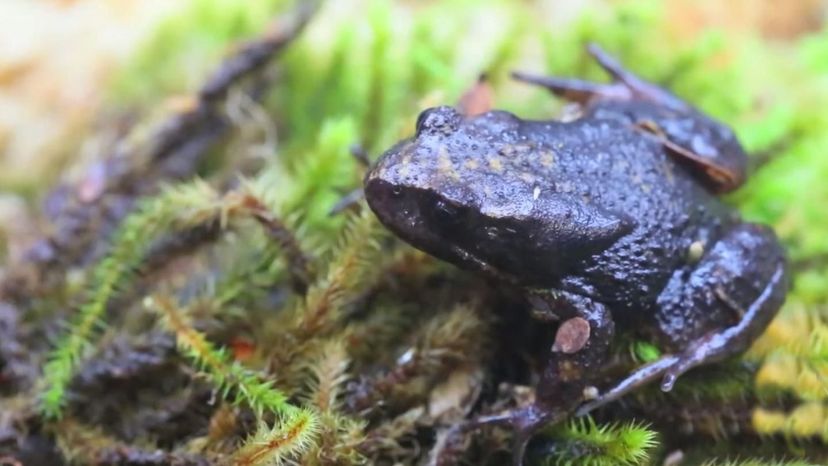
YouTube
What amphibian is seen in this image?
Emperor Newt
Black Snake
Baw Baw Frog
This Australian frog is critically endangered. It is found in the state of Victoria where it lives in eucalyptus forests and grassland areas mostly. This carnivore eats invertebrates, mostly insects or worms. The Baw Baw frog grows to between 40 mm and 55 mm in length.
Iberian Ribbed Newt
Advertisement
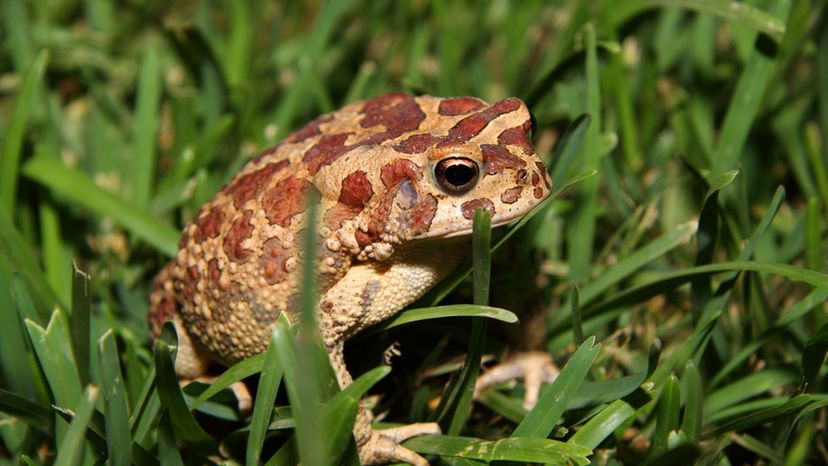
Shutterstock
What amphibian is seen in this image?
Great Crested Newt
Cave Salamander
Moroccan Spadefoot Toad
This burrowing toad spends six months of the year underground where it lies in a dormant state. It surfaces during autumn and winter, coming out at night to feed on invertebrates. Males grow to around 65 mm in length while females can be bigger, growing up to 70 mm.
Alpine Stream Salamander
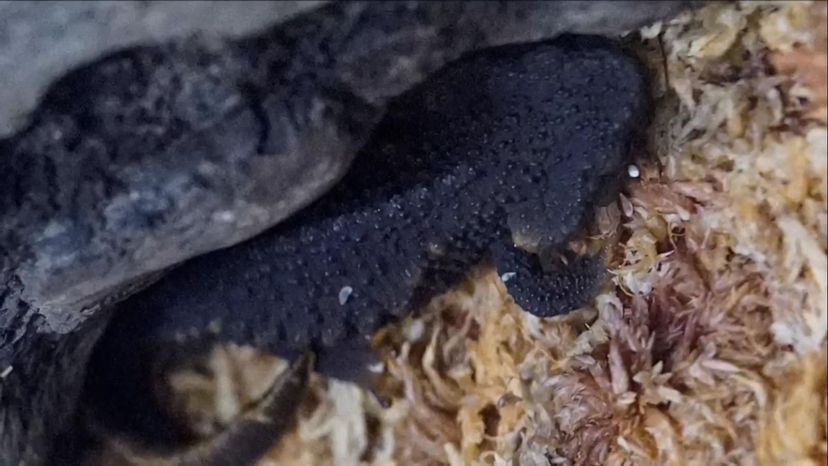
YouTube
What amphibian is seen in this image?
Kihansi Spray Toad
Panamanian Golden Frog
Alligator Newt
Found in the southern islands of Japan where they live in a variety of habitats including forests, croplands, swamps, and grasslands. This newt is so named thanks to its very rough skin, formed by glands on the side of the body. These, along with the under soles of its feet, are orange in color while the rest of the newt is normally black. Alligator newts grow to six inches in length.
Vietnamese Moss Frog
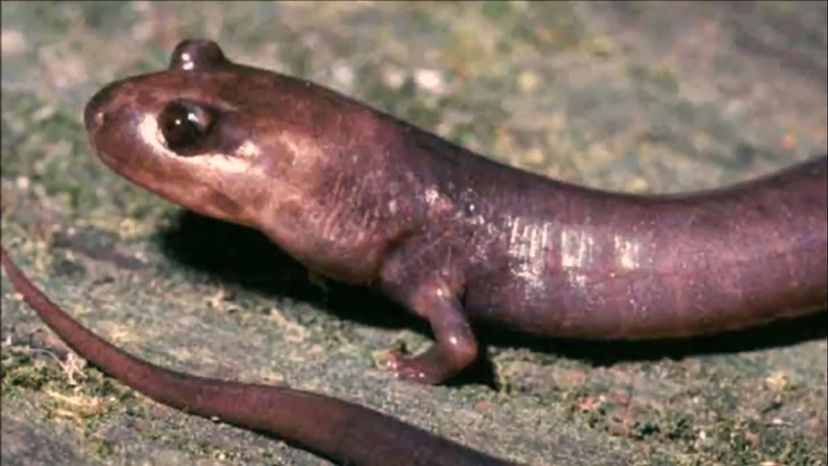
YouTube
What amphibian is seen in this image?
European Green Toad
Wyoming Toad
Sea Snake
Red Hills Salamander
This burrowing salamander can grow up to 250 mm in length. They are found in Alabama where they live in hardwood forests mostly on steep slopes. Unfortunately, logging is a real threat to these amphibians who were only discovered in 1960. These salamanders do not emerge from their underground homes, often hunting at night just by the entrance. Here they eat any hapless snails, ants, spiders, and millipedes that come their way.
Advertisement
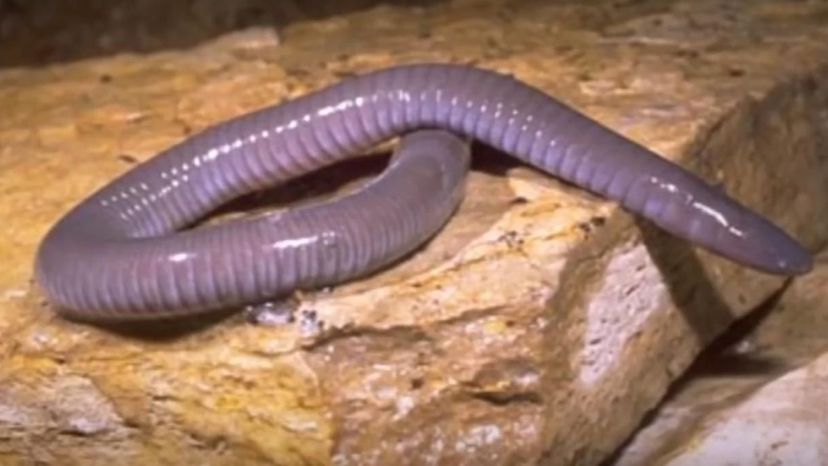
YouTube
What amphibian is seen in this image?
Goliath Frog
Tomato Frog
Toad
Coopers Black Caecilian
This strange amphibian is found in the Seychelles. It can grow up to 230 mm in length, has no limbs and looks very much like a worm. It spends most of its life in the ground where it burrows into its home.
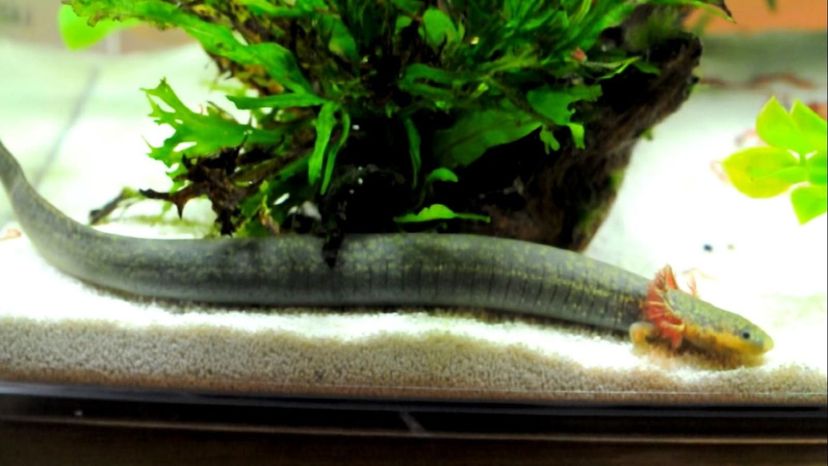
YouTube
What amphibian is seen in this image?
Western Lesser Siren
Found in a number of US states, including Alabama, Texas, and Michigan, the Western Lesser Siren looks like an eel at first glance. It has extremely small front feet and no feet at the rear of its body. Generally, these amphibians are brown, olive or black with black or brown dots on their skin. A large percentage of its day is spent hiding in the water. It will emerge at night but stay in the water to hunt small crustaceans, insects, worms, and snails. Once it finds a target, it sucks it whole into its mouth.
Tomato Frog
White's Tree Frog
Wyoming Toad
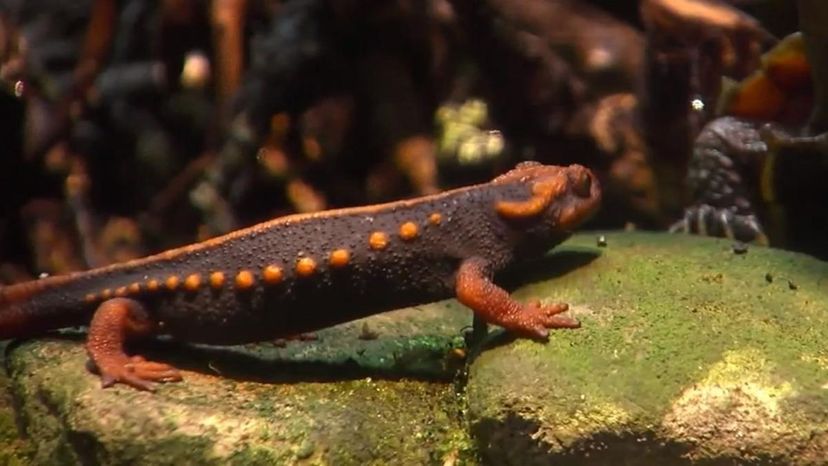
YouTube
What amphibian is seen in this image?
Mallorcan Midwife Toad
Zetek's Treefrog
Water Frog
Emperor Newt
Also known as the Mandarin newt, these amphibians can grow up to 20 cm long and originate in China. They are noted for their ridged head which is orange in color. They also have orange parallel lines down their backs and into their tails. These newts live in streams and pools, mostly in forests. They hunt invertebrates as prey, mostly worms, and small insects.
Advertisement
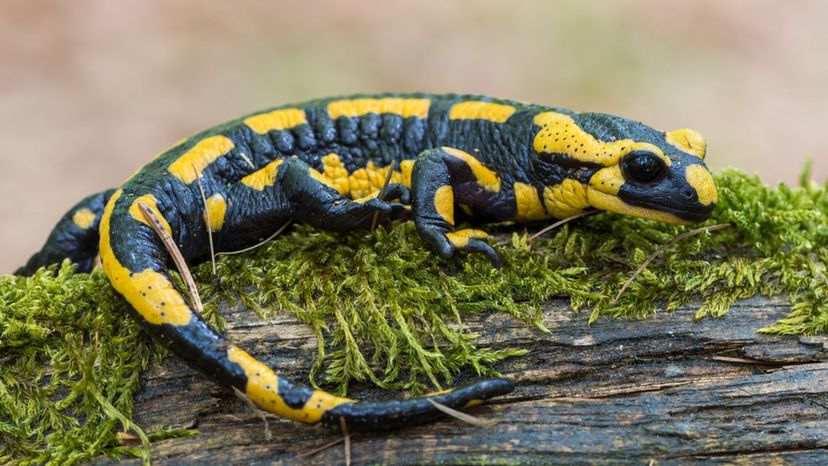
Shutterstock
What amphibian is seen in this image?
Arabian Toad
Fire Salamander
These amphibians are easily identified by their black skins with yellow spots. They grow up to 25 cm long. To protect themselves from predators, fire salamanders produce a toxin that seeps through their skin. They are found in hill areas in Europe where they eat small newts, frogs and insects to survive.
Southern Gastric-Brooding Frog
Golden Frog
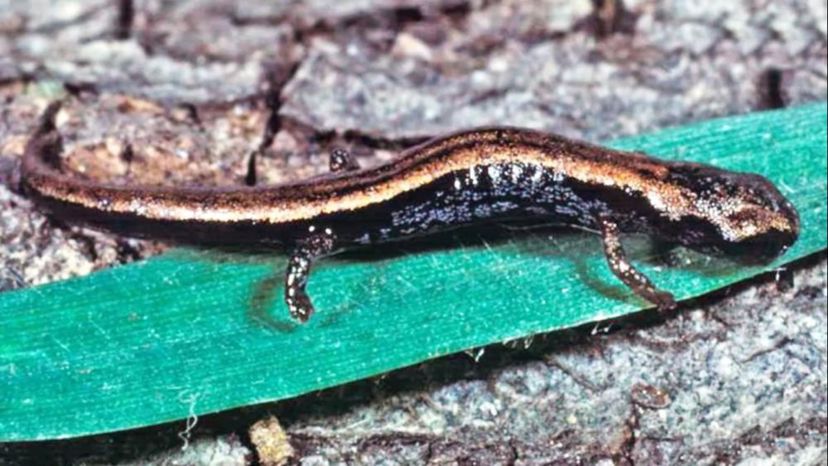
YouTube
What amphibian is seen in this image?
Banana Frog
Giant Bullfrog
Minute Thorius
Found in Central Veracruz in Mexico, this amphibian's habitat is now only around 15 hectares in size thanks to the impact of man, mostly through deforestation. The Minute Thorius grows to around 33 mm in length and it is considered to be a pygmy salamander. They are black/brown in color with a distinct stripe running down their backs.
Giant Toad

YouTube
What amphibian is seen in this image?
Tomato Frog
Chinhai Spiny Newt
Found in the Zhejiang Province, China, this newt hibernates during winter for a period of five months. It is thought that this species can live for 20 years and even longer. Their diet consists mainly of beetles, earthworms, other invertebrates, and snails. They have an incredible form of defense against predators. When attacked, they use their sharp, elongate ribs to stab the mouth of the predator and injects a liquid which causes intense pain.
Suriname Toad
Tree Frog
Advertisement
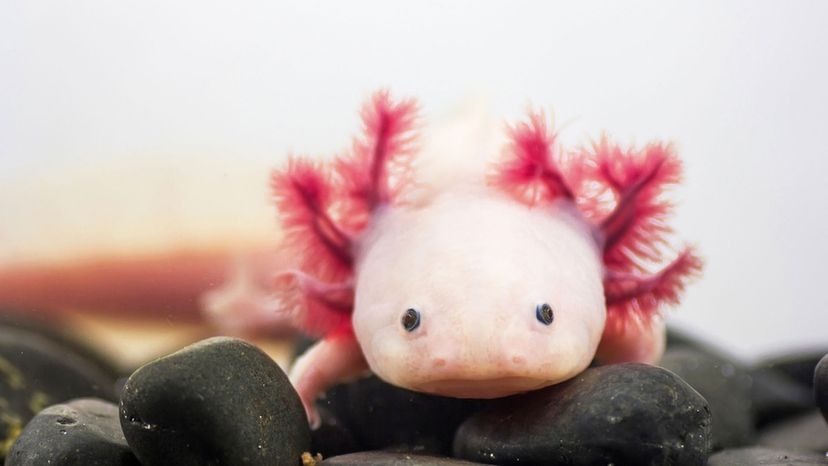
n/a
What amphibian is seen in this image?
Sea Snake
Axolotl
Known as the Mexican Walking Fish, this amphibian is green/black color in the wild while those in captivity are normally white and generally are descendants of a white Axolotl that was sent to Paris in 1863. This salamander has strange, feathery protrusions coming off its head. These are actually its gills. These incredible creatures are only found in one place in the wild - Xochimilco, Mexico.
Barbour's Forest Tree Frog
Waxy Tree Frog
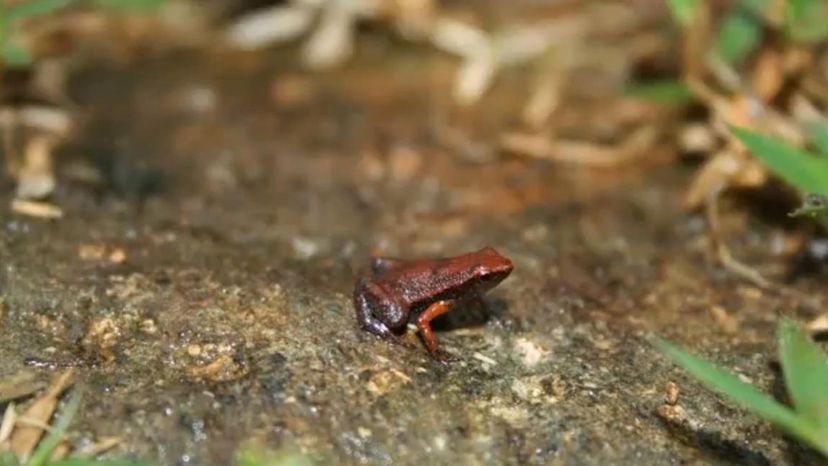
YouTube
What amphibian is seen in this image?
Seychelles Frog
One of the smallest frogs in the world, this amphibian only grows to around 11 mm. The Seychelles Frog stays on the ground, coming out at night to hunt. Due to its small size, it only hunts small prey such as mites. They do not breed tadpoles but all offspring are born as froglets.
Cave Salamander
Flatwoods Salamander
Smooth Newt

YouTube
What amphibian is seen in this image?
Blue-Tailed Fire-Bellied Newt
Hellbender
Iberian Ribbed Newt
Spring Peeper
This light brown frog with dark brown markings that form an X on its back grows to around 1 inch in length. They are known for the sound they make, normally at the beginning of spring. They inhabit wooded areas but also grassy lowlands.
Advertisement
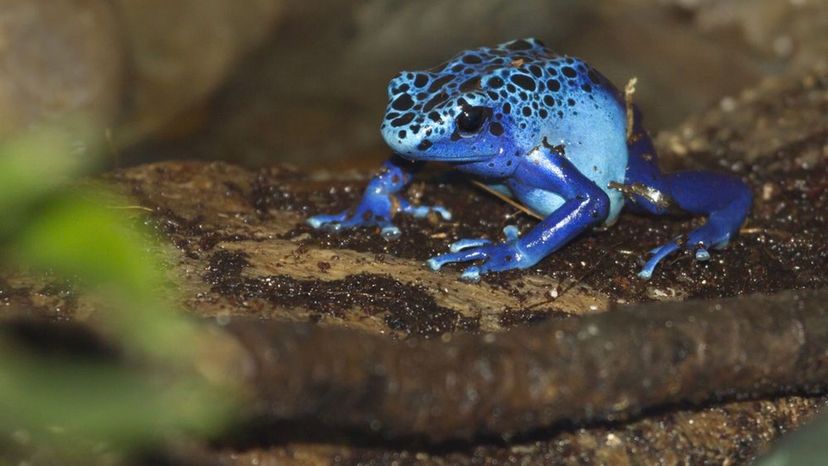
n/a
What amphibian is seen in this image?
Smooth Newt
Poison Dart Frog
These frogs come in a range of bright colors including red, yellow, copper, blue, black and gold. They are extremely caring for their offspring, even carrying tadpoles and smaller frogs around on their backs. These frogs are extremely toxic. Their poison has been used for centuries by the people of the Amazon to coat blowgun darts.
North African Fire Salamander
Giant Japanese Salamander
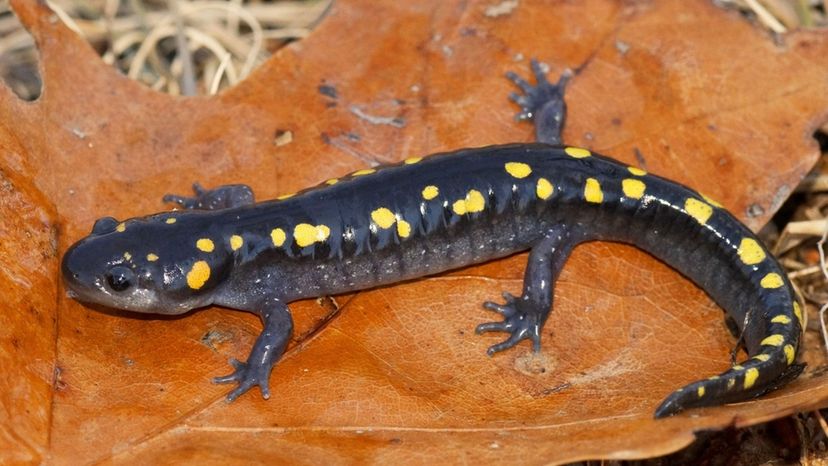
Shutterstock
What amphibian is seen in this image?
Spotted Salamander
Growing up to 9 inches in size, Spotted Salamanders can live for up to 20 years in the wild and are found in parts of Canada and the United States. They are blue/black in color and have yellow or orange spots on their bodies. These salamanders are carnivores and eat spiders, millipedes, worms, insects, and slugs.
Gray Wood Frog
Goliath Frog
Brown Snake
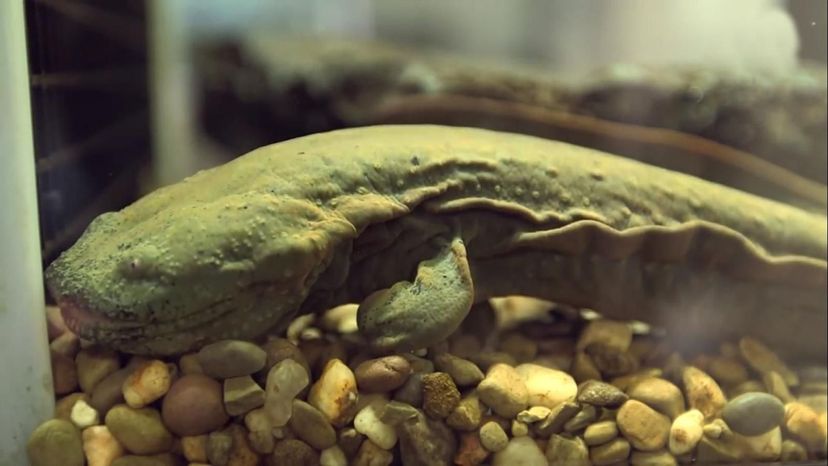
YouTube
What amphibian is seen in this image?
Vietnamese Moss Frog
Hellbender
Found on the east coast of the United States, Hellbenders are the largest salamanders in North America. On average, they grow to between 12 to 15 inches but can get bigger, in some cases close to 30 inches. They eat mostly crayfish but also worms, insects, and small fish. Hellbenders have many aliases, including snot otter, devil dog, mud devil and mud dog.
Komodo Dragon
Giant Toad
Advertisement

YouTube
What amphibian is seen in this image?
Golfodulcean Poison Frog
Puerto Rican Crested Toad
Black Snake
Mud Puppy
Mudpuppies grow to between 8 and 13 inches in size and live for around 11 years in the wild. They are found in parts of Canada and the United States where they live at the bottom of streams, rivers, and lakes. These amphibians stay constantly in water and never leave. They are gray in color with black spots. They are easily identifiable by their red feathery gills that grow on the outside of their bodies.
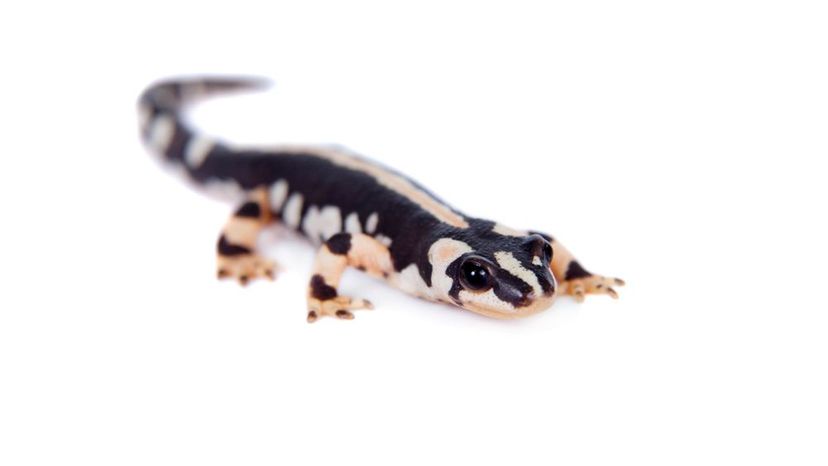
Shutterstock
What amphibian is seen in this image?
Plains Leopard Frog
Luristan Newt
Found in Iran, this newt, which is on the critically endangered list, grows up to around 5 inches in length. They are extremely bright in color, generally black and yellow or white with an orange line running down their backs. They spend much of their lives underground as their habitat only sees water for around three months of the year. Because of the harsh conditions in which they live, breeding programs have been established to ensure they do not go extinct.
Big-Eyed Tree Frog
African Wart Frog
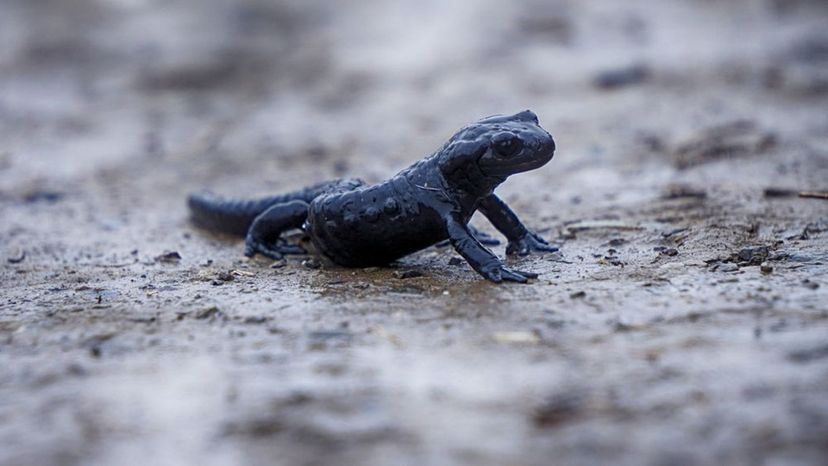
Shutterstock
What amphibian is seen in this image?
Black Torrent Toad
Black Jumping Salamander
This salamander was only discovered in 1974. They are found in Mexico and have a unique defense mechanism. Like all salamanders, they excrete a vile-tasting, sticky substance making them undesirable to some predators. But they also have the ability to jump, hence their name. These salamanders grow up to 250 mm in length.
Blue Poison Frog
Purple Frog
Advertisement
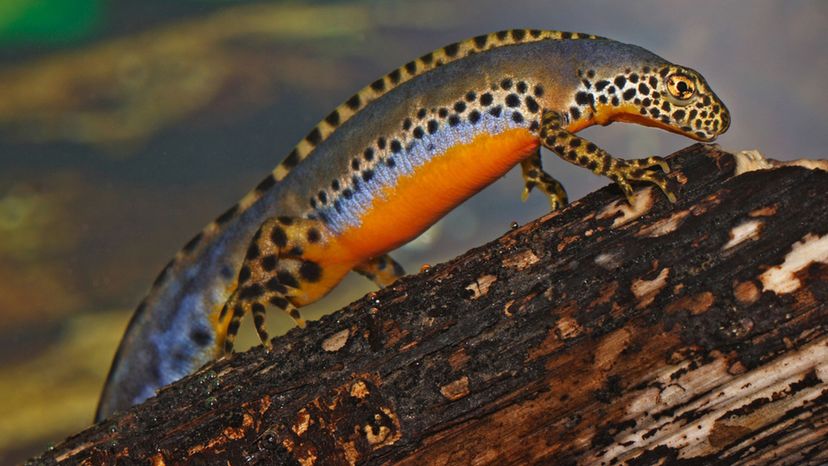
Shutterstock
What amphibian is seen in this image?
Alpine Newt
Found in a number of locations in Europe, particularly in forests, the Alpine Newt is mostly dark, although some areas of the body are white with black spots. Their underside is a bright orange/yellow color. They grow to between 4 to 5 inches in length with females larger than males. These newts mostly feed on earthworms, beetles, and other insects.
Gray Wood Frog
Table Mountain Ghost Frog
Giant Toad
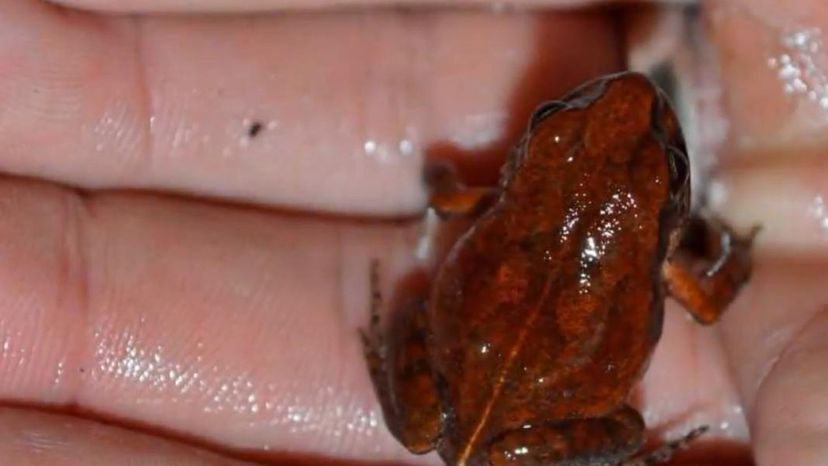
YouTube
What amphibian is seen in this image?
Hellbender
Emperor Newt
Cave Squeaker
This species of frog lives in Zimbabwe near the Chimanimani Mountains. They were not seen for a period of 55 years but have been found again this year. These small frogs grow to around 25 mm in length. They are brown in color.
North African Fire Salamander

YouTube
What amphibian is seen in this image?
Baby Crocodile
Three-Toed Amphiuma
Found in marshes, ponds, lakes, swamps and other bodies of water, the Three-Toed Amphiuma is native to the United States, particularly the southern states. This amphibian is extremely long - up to 42 inches - and has a pointy head and four small feet. Colorwise, they vary from dark brown to black with a gray or light brown underside. Because of their small feet, Amphiumas spend all their time in the water.
Puerto Rican Crested Toad
Lemur Leaf Frog
Advertisement
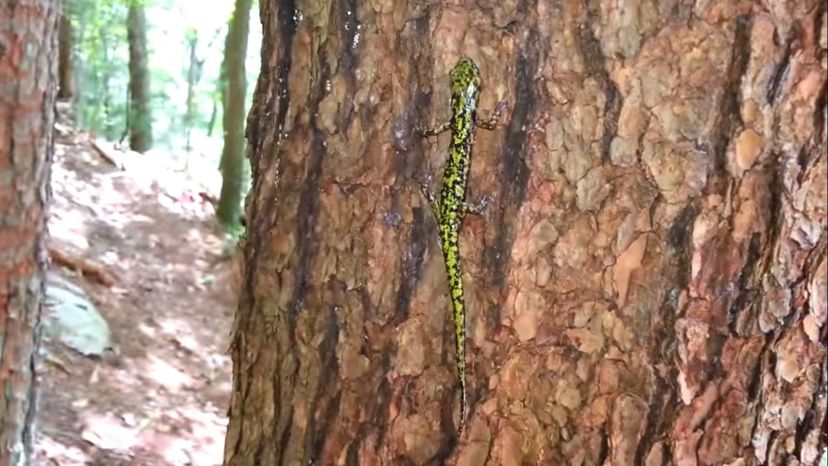
YouTube
What amphibian is seen in this image?
European Green Toad
Green-and-Black Poison Dart Frog
Vietnamese Moss Frog
Veracruz Green Salamander
Found in the Veracruz region of Mexico, this salamander grows to around 54 mm in length (females). They are found in a range of colors including dark green, green-ochre, tan-yellow and pale-yellow green, amongst others. Tails are paler and have an orange tip. They live in forests at around 3,900-4,900 feet above sea-level.
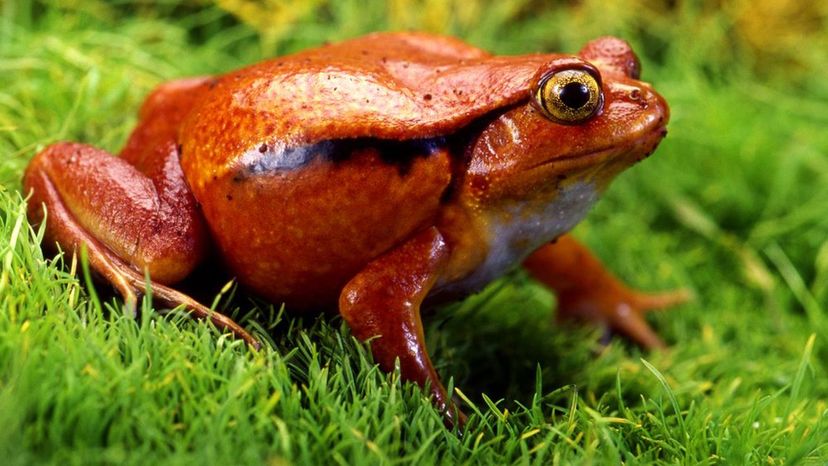
Shutterstock
What amphibian is seen in this image?
Emperor Newt
Tomato Frog
Tomato Frogs are so named because of their color, a bright red. These frogs live between 6 to 8 years and puff themselves up when they are threatened. They also secrete a substance that, if taken by predators, causes the predator's mouth and eyes to stick together, although they will release the frog before this happens.
Emperor Newt
Komodo Dragon
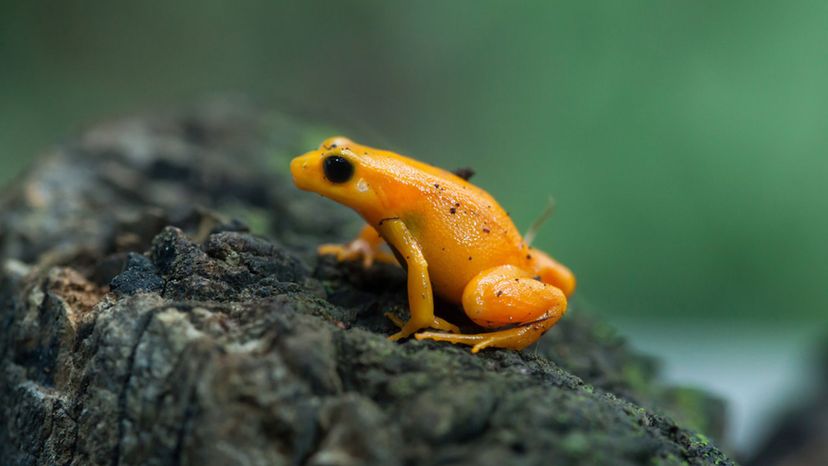
Shutterstock
What amphibian is seen in this image?
Alpine Stream Salamander
Golden Mantella
This frog is found on the island of Madagascar in the Indian Ocean where it lives in swamps at high altitudes. Although they have the color gold in their names, they can be a range of colors from gold, to yellow and even shades of red. The Mantella is a small frog that only grows up to a length of around 30 mm. Although they are endangered, they have been bred successfully in 35 zoos around the world.
Chinese Giant Salamander
Japanese Giant Salamander
Advertisement
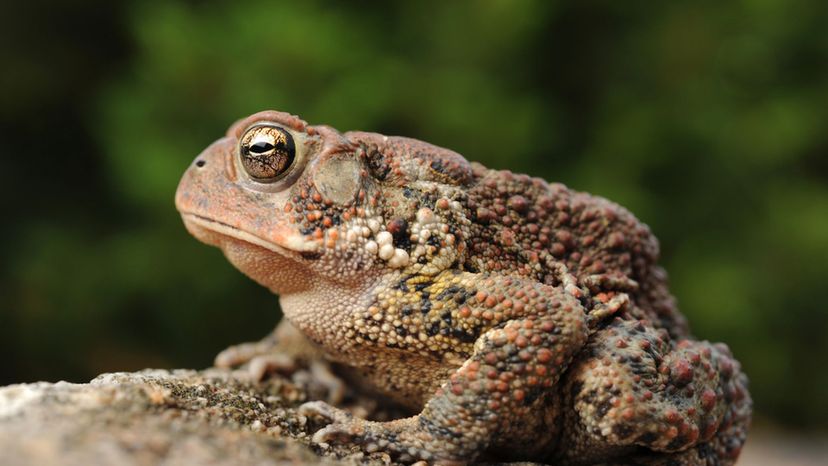
Shutterstock
What amphibian is seen in this image?
Aligator Newt
Cave Salamander
American Toad
Found in eastern Canada and the United States this toad grows between 2 and 4 ½ inches in length. They vary in color but are mostly tan-brown, olive-green or reddish-brown. They can also vary between solid or patterned skins. American Toads use their tongues to catch various insects, including slugs, earthworms, spiders, and invertebrates. They live only around 2 years.
Smooth Newt
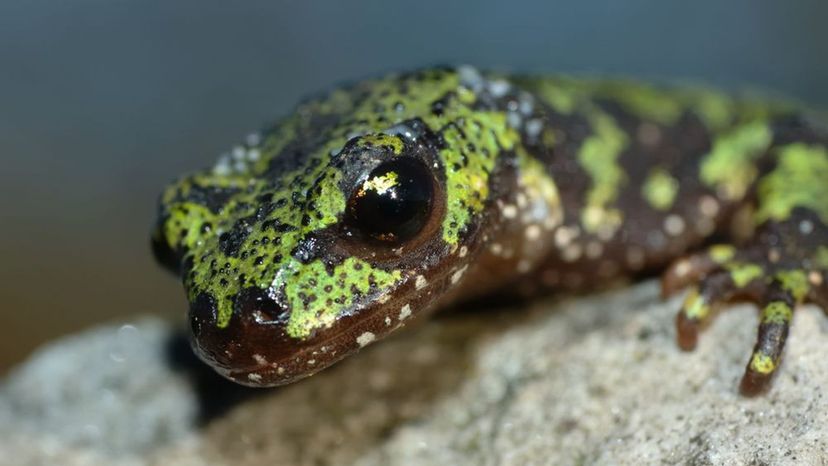
Shutterstock
What amphibian is seen in this image?
Giant Marine Toad
Green-and-Black Poison Dart Frog
Marbled Newt
Marbled newts are found in England and throughout Europe. These amphibians live in ponds that are filled with vegetation and plant matter. For around 5 months of the year, they spend time breeding. Otherwise, they remain out of sight. During the breeding months, a complicated courting ritual is carried out by the males to impress potential partners.
Tomato Frog
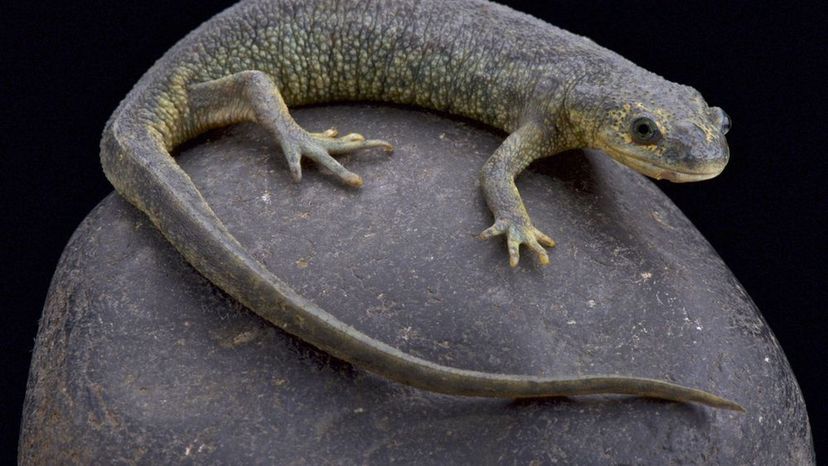
Shutterstock
What amphibian is seen in this image?
Bull Frog
Toad Frog
Tree Frog
Algerian Ribbed Newt
Not much is known about these olive-colored newts that are covered in bumpy skin, hence their name. They are mostly found in Algeria and parts of Tunisia and grow up to 23 cm in length.
Advertisement
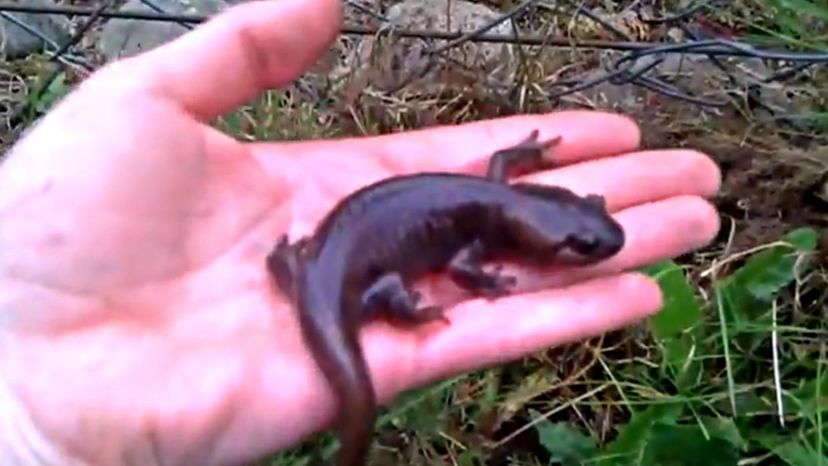
YouTube
What amphibian is seen in this image?
Plains Leopard Frog
Mole Salamander
Mole Salamanders are found in the southeastern states of the United States, including Georgia and Alabama. Females are generally bigger than males and can grow up to 120 mm in length. They live in a number of habitats, including forests and floodplains, for example. They are always found close to a body of water.
Surinam Toad
Vietnamese Moss Frog
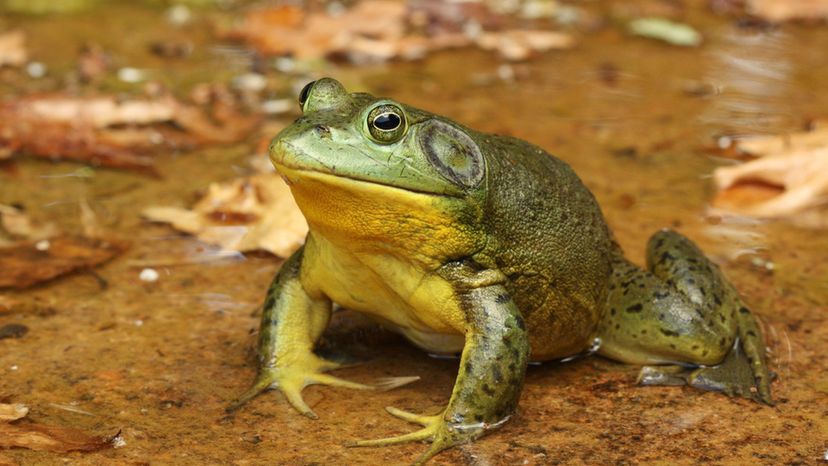
n/a
What amphibian is seen in this image?
American Bullfrog
Growing to around 6 inches in size, the American Bullfrog lives in the wild for between six to eight years. They are known for their baritone croak and they make most of their noise at night. Most are green or grey-brown in color. They hunt at night and are not fussy, eating anything they can put in their mouths, including fish, insects, mice, snakes and even birds.
North African Fire Salamander
Mole Snake
Komodo Dragon

Shutterstock
What amphibian is seen in this image?
Japanese Giant Salamander
Palmate Newt
Giant Marine Toad
These massive toads grow to around 10 inches in length. They are capable of releasing a toxic spray when threatened. These creatures are found all over the world. They mostly eat invertebrates or anything that may fit into their mouths.
Flatwoods Salamander
Advertisement
You Got:
/40
n/a
